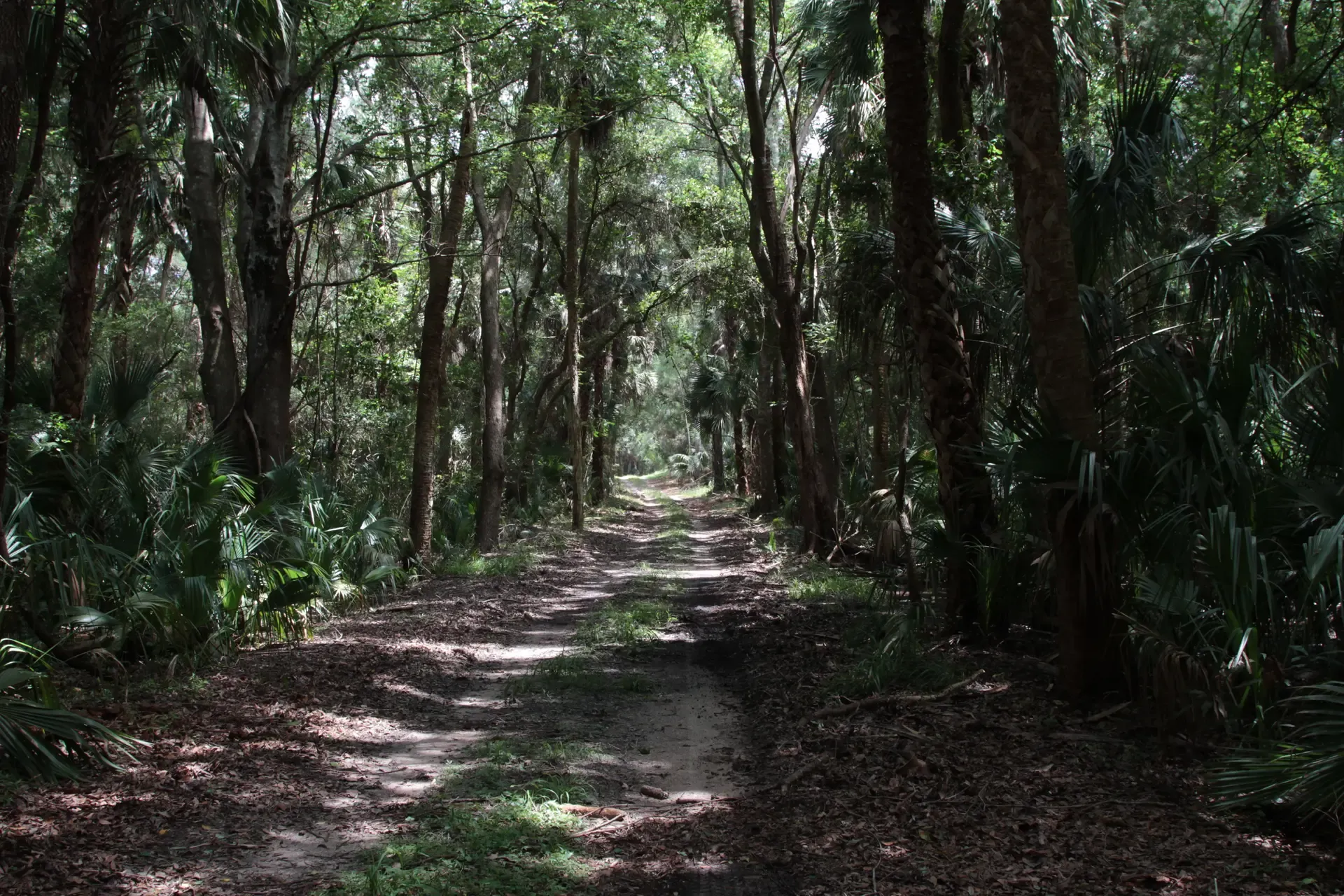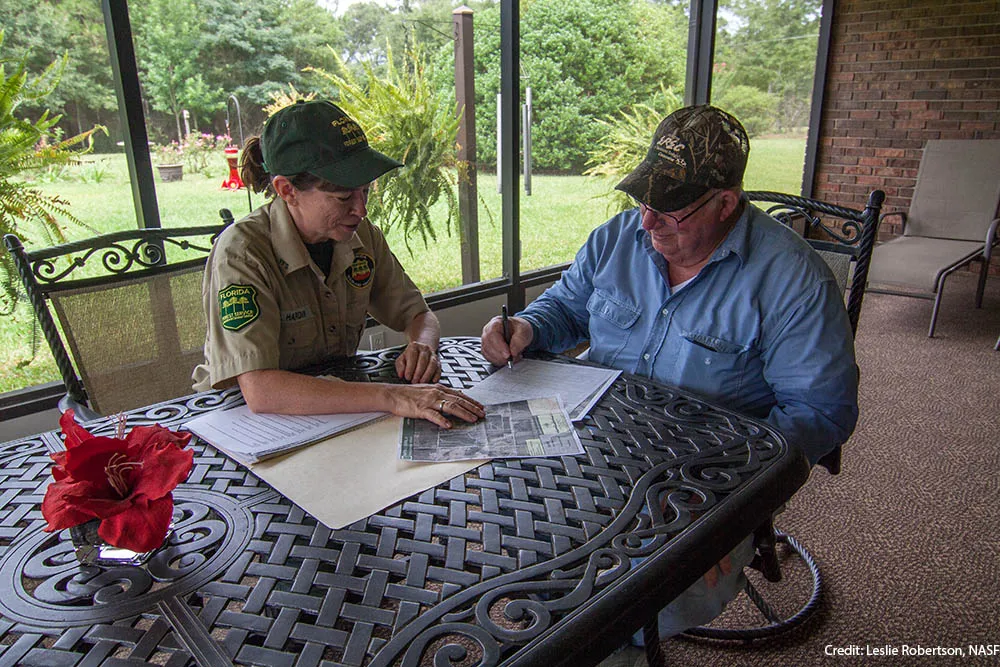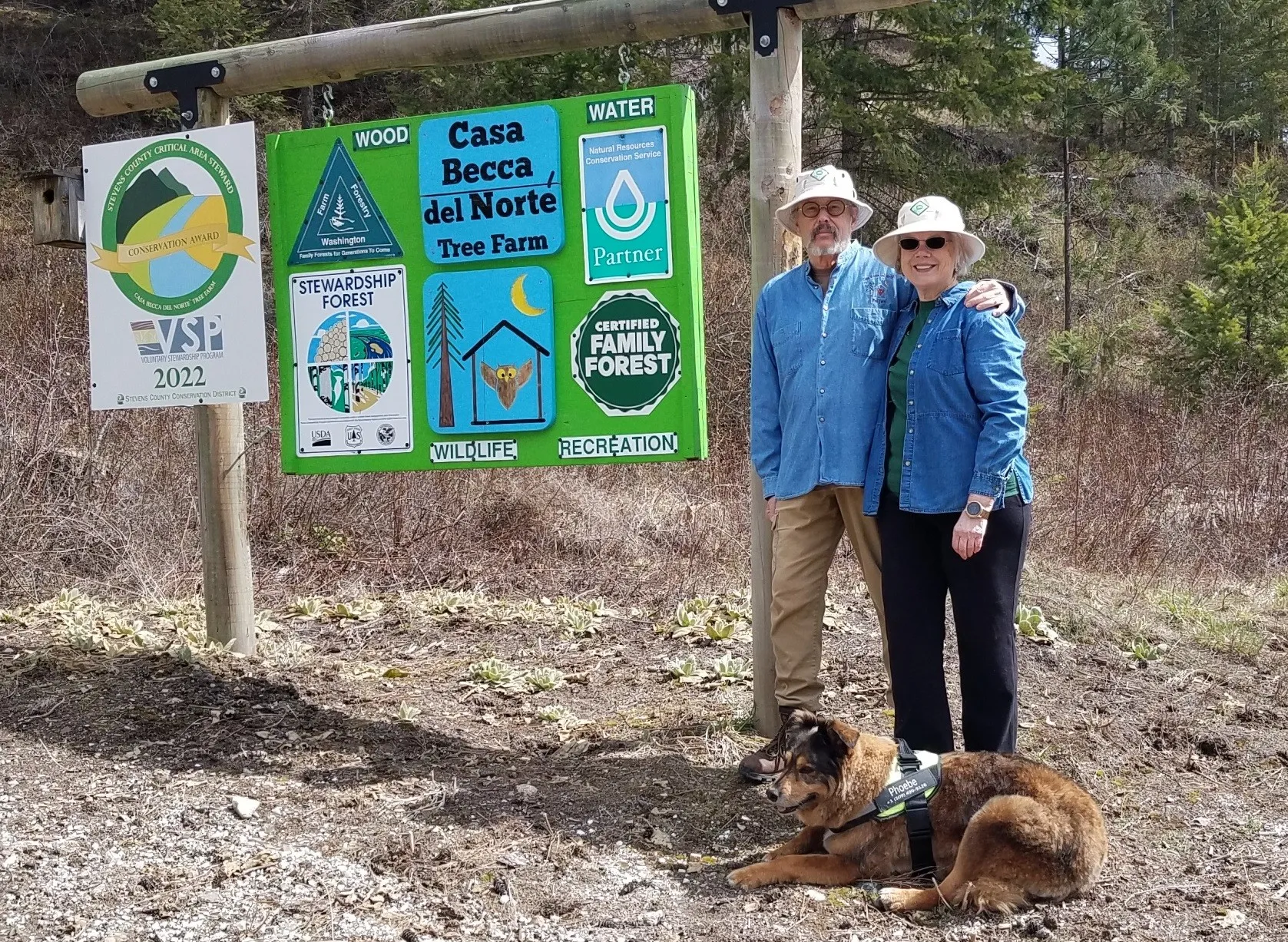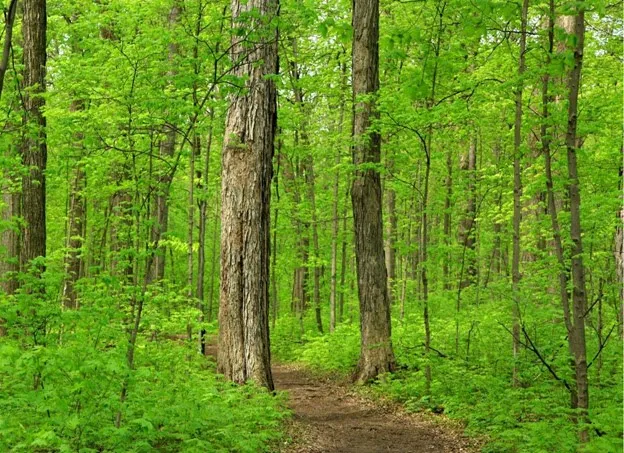Notes From the Field: Positive Responses, Early Results Show Promise for Landscape Management Plan

Last year, the American Forest Foundation (AFF) along with Enviva, the Nature Conservancy, the Florida Forest Service, The University of Florida Extension and the Florida Tree Farm Committee, all organizations that have a stake in the forests of the region, launched a partnership to help landowners in the panhandle of Florida improve wildlife habitat and certify their forests are sustainably managed.
The partners conducted outreach and quickly had well over 270 landowners, owning 57,000 acres of forestland, indicate they were interested in participating.
Though thrilled with the response, meeting and getting these individuals started in the first steps of management – by having a written management plan – presented time challenges given the limited number of service foresters in the area.
In the fall, the partnership decided to take on this hurdle – getting a forest management plan written – by testing a new tool: a landscape management plan.
A landscape management plan, rather than being written for an individual property, is a region-wide plan designed for the entire panhandle. It reflects the local species and priorities, and recommends practices needed to improve the forests and habitat of the entire forested landscape.
Landowners whose goals align with those of the region can use recommendations from the landscape management plan as an alternative to the individually written plan. This not only expedites the process for both landowner and forester, but also ensures that the work being conducted on different parcels of land supports the needs of the entire ecosystem. This approach also accelerates certification for these family forests, which means more certified content is available to meet marketplace sustainability needs.
What Are The Challenges With A Forest Management Plan?
Forest management plans outline a landowner's goals for their land, and the subsequent actions they can take to achieve these goals. They include considerations around soils, water resources, threatened and endangered species, and more. It also acts a ‘ticket’ to admission to certification programs such as the American Tree Farm System (ATFS) as well as family landowner assistance programs.
Historically these plans have been written at the individual property level, making them incredibly time intensive for the service forester who writes them. Often these foresters, whose time would be better spent on the ground with landowners, have a backlog of plans to write. On average it can be 2-6 months before you receive your plan, severely delaying the time it takes to get a landowner taking action and improving their land.
The Landscape Management Plan in Action
The Florida Forest Service, the on-the-ground partner, began meeting with the interested landowners. For landowners whose personal goals align, the Florida service foresters have offered the landscape management plan as an option.
Philip Garrett, one of the service foresters with the Florida Forest Service has been impressed with the plan’s efficiency. Philip, who regularly meets with 200-250 already managing and new landowners a year, has said the landscape management plan has freed up desk time, and allowed him to meet with landowners as often as once a month.

Florida forester reviewing management plan with a landowner. Photo courtesy of Leslie Robertson, NASF.
For new landowners in particular, it would take nearly three months to get them their individual plan and recommendations, but with the landscape management plan, the turnaround time has decreased to less than a week after the initial meeting. Philip has met with five landowners that came through the Florida partnerships outreach who are candidates for the landscape plan. All have agreed to adopt it.
“The landscape management plan streamlines the process and allows us [as foresters] to get these plans out faster and then spend more time with the landowner—which is what they really want and allows us to actually help them implement important practices,” says Philip.
For example, Philip recently received a call from a new landowner who had recently purchased 150 acres, voicing concern about dying trees. When Philip met with him, he quickly learned the landowner and his wife had goals for their land around creating and maintaining a sustainable timber supply. Philip immediately recommended the landscape management plan and explained how it operates as a how-to guide for caring for the panhandle’s forests and addressing common challenges. They were mostly impressed by the detail of the stand treatment schedule and grateful to receive it so quickly that they immediately agreed to adopt it, wanting to get started right away.
“The landscape management plan opens the door for more involvement on our end with landowners and it helps to set them on the right course,” Philip says. “It’s helped get landowners more engaged with their properties and with the process, and getting in stewardship and ultimately into ATFS. The faster turnaround times on these plans is a big deal.”
The partnership continues to meet with interested landowners and when applicable, offer the landscape management plan, helping move these landowners more quickly to action. The faster these landowners are implementing change, the more quickly positive results will be seen to support wildlife and sustainability, which, ultimately, benefits all.
Related Articles

November 6, 2025
Meet the 2025 Outstanding Tree Farmers of the Western Region – Lynn and Becky Miner
Lynn and Becky Miner’s story is one of vision, perseverance, and transformation. When they first purchased their 100-acre property near Chewelah, Washington in 1992, it was far from the thriving, diverse forest it is today. They have poured their energy into turning “Casa Becca del Norte” (Becky’s House in the North) into a model Tree Farm, earning the recognition as 2025’s Outstanding Tree Farmers of the western region.

June 25, 2024
Updates to the Family Forest Carbon Program’s Forest Management Practices
As the Family Forest Carbon Program expands into new regions, new forest management practices are developed, tested and optimized to provide value to landowners and the environment.

May 28, 2024
The Latest News on the Family Forest Carbon Program
The Family Forest Carbon Program is continuously expanding, with landowners in more states and counties eligible every year.